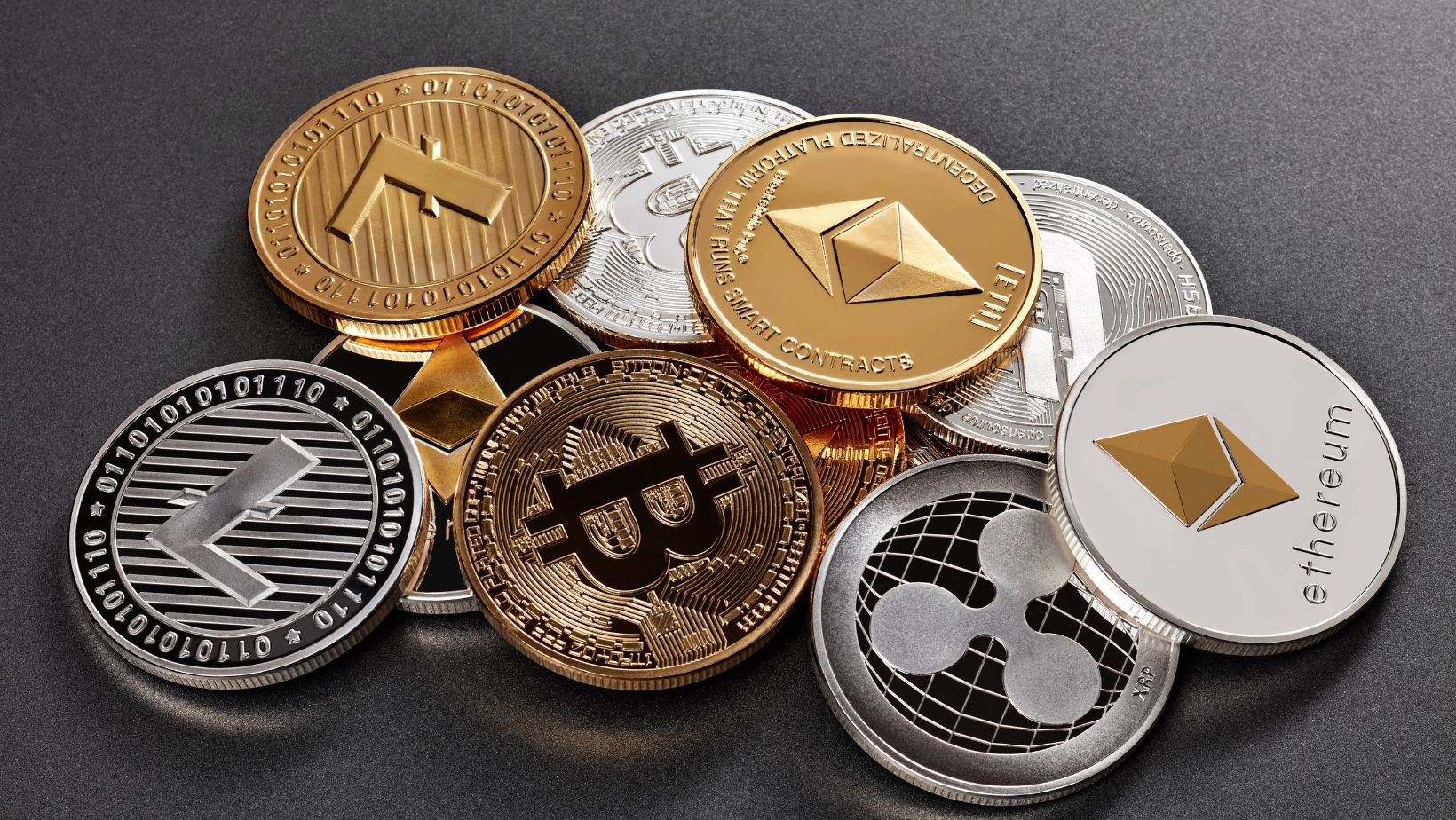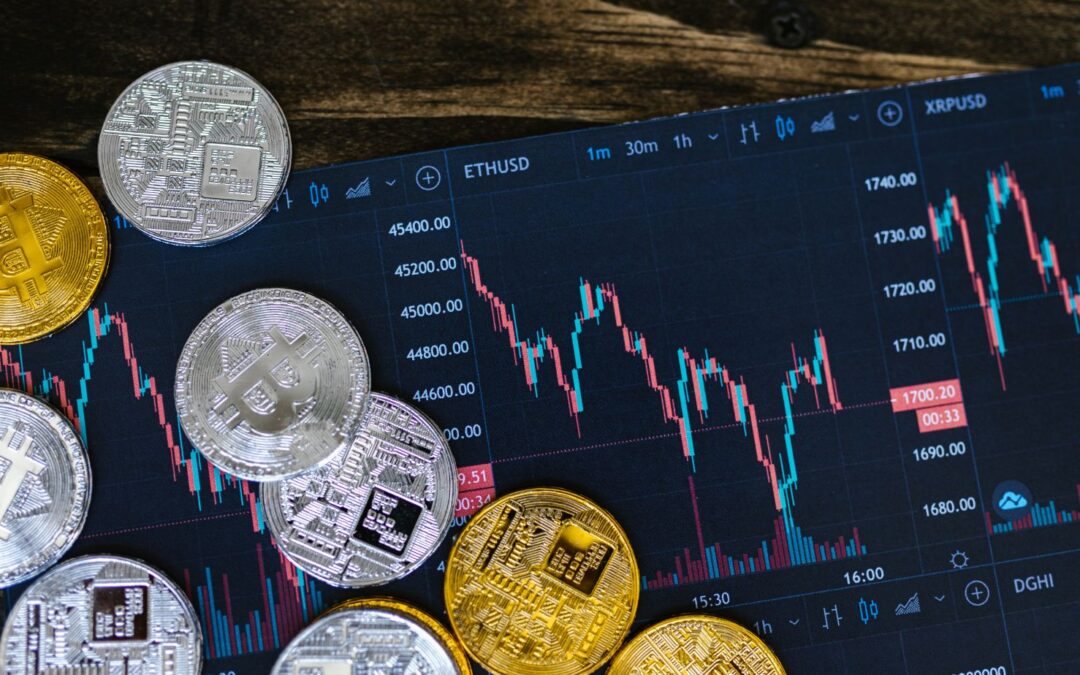Our comprehensive crypto exchange reviews and comparisons recommend platforms such as Coinbase and Kraken for beginners due to their user-friendly interfaces, strong security measures, and support for multiple fiat currencies. It’s important to consider factors like ease of use, customer support, and security when selecting a platform for your cryptocurrency trading needs.
Crypto Exchange Overview
When it comes to crypto exchanges, choosing the right one can be quite overwhelming. With an array of options available, it’s essential to assess each platform’s features, security, and offerings to find the right fit for your investment needs. Whether you’re a seasoned trader or a beginner looking to explore the crypto world, selecting the right exchange is crucial for a seamless experience. Platforms like Binance, Coinbase, Kraken, and Bitfinex are widely recognized for their diverse subirimagenes.com cryptocurrency options and trading pairs, catering to the needs of users worldwide.
Binance stands out for its extensive range of supported cryptocurrencies and trading pairs. It boasts a user-friendly interface that caters to beginners and advanced traders alike. Additionally, Binance provides competitive trading fees, and leverages advanced technology to ensure smooth trade execution.
On the other hand, Coinbase offers a straightforward and intuitive platform, making it an excellent choice for beginners venturing into cryptocurrency trading. The exchange supports a wide range of cryptocurrencies and focuses on providing a user-friendly experience with robust security measures.
Kraken, renowned for its low fees and advanced trading features, appeals to experienced traders seeking a platform that offers margin trading, futures trading, and various order types. Its commitment to security and transparent fee structures positions it as an attractive option for discerning traders.
As for Bitfinex, its robust trading tools and support for a broad range of cryptocurrencies make it an appealing choice for experienced traders requiring advanced charting tools and competitive trading pairs.
These exchanges play pivotal roles in facilitating the buying, selling, and trading of numerous cryptocurrencies. Their diligence in maintaining robust security measures and continually expanding their offerings ensures users have access to the rapidly evolving digital asset market.
It’s important to note that while these platforms offer diverse opportunities for users to engage in cryptocurrency trading, each exchange has its unique characteristics and strengths. Considering factors such as security protocols, fee structures, supported cryptocurrencies, customer service quality, and ease of use is essential when evaluating which exchange aligns with your investment goals and preferences.
This overview offers insight into some of the leading cryptocurrency exchanges, laying the groundwork for determining which platform resonates with your investment aspirations. As we continue our exploration of crypto exchanges, we’ll delve deeper into their individual strengths and inherent considerations that cater to varying user needs.
Now that we’ve laid the foundation for understanding top cryptocurrency exchanges let’s explore how identifying user-friendly exchanges can elevate your crypto trading experience.
Identifying User-Friendly Exchanges
When it comes to selecting the right crypto exchange, ease of use should be a critical consideration. A user-friendly interface, responsive customer support, and ample educational resources can significantly enhance the trading experience for both beginners and seasoned traders.
Interface Intuitiveness
The interface should be simple and clear, with well-organized menus and navigation tools to make trading, depositing, and withdrawing funds as seamless as possible. Look for exchanges that provide an intuitive experience, reducing the learning curve for new users and streamlining the process for experienced traders.
Moreover, an intuitive interface minimizes the risk of errors during transactions, ensuring that users can execute their trades promptly and efficiently. Picture a smoothly paved road with clear signposts leading you to your destination—this is the kind of intuitive experience that user-friendly exchanges strive to offer.
Customer Support Quality
Responsive customer support is another crucial aspect to consider when evaluating exchanges. A platform with high-quality customer support services can make a significant difference in addressing technical or account-related issues promptly.
Imagine encountering a problem with your account or a transaction—swift and effective support can provide peace of mind and resolve issues seamlessly. Therefore, it’s important to choose an exchange known for its attentive and helpful customer support team, ensuring that users feel supported throughout their trading journey.
Educational Resources
For beginners entering the world of cryptocurrency trading, comprehensive educational resources and tutorials provided by certain exchanges can be invaluable. These resources help demystify the complexities of the cryptocurrency market, empowering users to make informed decisions.
Quick Tip: Look for platforms that offer a range of educational materials, including articles, videos, and webinars—a sign that the exchange invests in its users’ knowledge and understanding.
Exchanges that prioritize educational resources demonstrate their commitment to guiding users through the intricacies of trading and market dynamics. By offering these materials, they create an environment where beginners can grow their confidence and expertise while providing established traders with updated insights into market trends.
As you explore different exchanges, consider these key factors—interface intuitiveness, customer support quality, and educational resources—to gauge their user-friendliness. Choosing an exchange that excels in these areas can greatly enhance your overall trading experience and contribute to your success in navigating the dynamic world of cryptocurrency.
Moving beyond user-friendliness, it’s essential to comprehend the varying fee structures across different crypto platforms—each with its own implications for your investment strategy and bottom line.
Fee Structures Across Different Platforms
When it comes to crypto exchanges, each platform imposes various fees, such as trading fees (fees for buying or selling crypto), deposit fees (for adding money), and withdrawal fees (for taking money out). It’s crucial to assess these fee structures because they directly impact your investment returns.
For instance, some platforms might have higher trading fees but lower withdrawal fees, while others offer reduced fees for high-volume traders or holders of native exchange tokens. This means that if you trade a lot, you might get lower fees on certain exchanges.
Understanding the fee structure is vital for making informed decisions about where to trade. High fees can erode your profits, especially if you’re an active trader or dealing with large amounts of crypto. Conversely, reduced fees for high-volume traders can significantly impact your bottom line.
Let’s say you’re an active trader who makes several trades a day. If you’re paying high trading fees on each trade, those costs can add up quickly and reduce your overall profits. However, finding a platform with lower trading fees due to high volume could mean more money in your pocket at the end of the day.
It’s not just the trading fees that matter; deposit and withdrawal fees can also affect your investment returns. High deposit fees mean starting off with less money to invest. Similarly, high withdrawal fees can cut into your profits when cashing out.
Think of it like setting up a lemonade stand; every dollar spent on lemons and sugar (deposit) affects how much profit you make from selling the lemonade (trading). Similarly, every dollar spent on cups and signs (withdrawal) affects the amount of money you get to keep at the end of the day.
Assessing fee structures across different platforms isn’t just about saving a few bucks; it’s about maximizing investment returns and ensuring that hard-earned money isn’t eaten away by unnecessary fees.
Assessing Security Measures of Each Exchange
When dealing with cryptocurrency, security should be a top priority. We’ve all heard stories about hacked exchanges and lost crypto. No one wants to be the next victim, right?
Let’s talk about two-factor authentication. This is a must-have for any reputable exchange. It adds an extra layer of protection by requiring not only a password but also a secondary, unique verification code to access your account.
Now, let’s consider where the exchange stores its funds. Cold storage is a term you may come across when researching exchanges. It simply means that the majority of the exchange’s funds are kept offline, away from internet access. This makes it much more difficult for hackers to breach and steal those digital assets.
What if something does go wrong? That’s why it’s essential to look for exchanges that offer insurance for digital assets. This provides an additional safety net in case of security breaches or other unforeseen events.
Regulatory Compliance and Security
Regulatory compliance is another critical factor. An exchange that adheres to regulations offers an added layer of protection for your investments. It means they’re following strict guidelines set by governing bodies, which can help mitigate potential fraud and illicit activities within the platform.

For example, some of the most trustworthy exchanges are regulated under the financial laws of their respective countries, such as the U.S-based exchanges being compliant with FinCEN (Financial Crimes Enforcement Network) regulations and those in Europe adhering to standards set by the European Securities and Markets Authority (ESMA).
The security of your investments is as vital as securing your home or locking your car when you park it. By understanding and evaluating these fundamental security measures, you step closer to making informed decisions when choosing the right cryptocurrency exchange for your needs.
As we navigate through the intricate world of cryptocurrency exchanges, gaining insights into their security measures is just the first step towards informed decision-making. Now, let’s pivot our focus to explore the nuances between regulated and unregulated crypto exchanges.
Regulated Vs. Unregulated Crypto Exchanges
When it comes to choosing a crypto exchange, deciding between regulated and unregulated platforms is a major consideration. Let’s break down what it means for an exchange to be regulated or unregulated and what that might mean for you as a user.
Regulated exchanges are those compliant with government regulations and subjected to official oversight by relevant authorities. This oversight typically encompasses strict financial, security, and operational standards. On the other hand, unregulated exchanges operate outside of this stringent regulatory framework, offering users more privacy and flexibility in their transactions but leaving them open to potentially higher risks due to the lack of official oversight and accountability.
Regulated exchanges prioritise protection for their users through compliance with legal requirements aimed at preventing fraudulent activities, money laundering, and ensuring the security of customer funds. As a result, traders on regulated platforms often have greater peace of mind knowing that their investments are subject to a certain level of protection and they are less likely to encounter shady practises. In contrast, unregulated exchanges may offer more anonymity and fewer restrictions on trading activities, making them attractive for those seeking privacy and freedom from government interference. However, this comes with increased vulnerability to potential scams, market manipulation, and hacks.
Understanding the regulatory status of an exchange is vital when evaluating the safety and reliability of a platform for cryptocurrency trading. Each type has its own set of pros and cons, which should be thoroughly considered based on individual preferences and risk tolerance.
As we navigate the intricate landscape of cryptocurrency exchanges, it’s essential to grasp the nuances between different platforms. Now, let’s delve into a key aspect of these exchanges—Trading Volume and Liquidity Comparison.
Trading Volume and Liquidity Comparison
When it comes to cryptocurrency exchanges, trading volume and liquidity play a pivotal role in determining the ease of buying and selling digital assets.
Trading Volume: This refers to the total number of assets traded within a specific time period (usually 24 hours). A higher trading volume often indicates a more active market with a larger number of transactions taking place. This can be indicative of greater interest from traders and investors.
Liquidity: Liquidity is the ability to buy or sell an asset without causing a significant change in its price. In simpler terms, it’s about how easily you can convert your cryptocurrency into cash or other assets without impacting the market.
Why It Matters
A crypto exchange with high trading volume and liquidity generally offers several advantages for traders and investors:
● Tighter Spreads: Higher liquidity tends to result in tighter bid/ask spreads, meaning that there is less of a price difference between what buyers are willing to pay and what sellers are asking for. This reduces transaction costs for traders.
● Favourable Prices: With greater liquidity comes the potential for more competitive prices. Traders can buy or sell assets at prices that closely align with market rates, as there are more participants willing to engage in transactions.
● Market Stability: A liquid market is generally more stable, with less likelihood of extreme price movements due to relatively balanced buy and sell orders.
Evaluating Trading Volume and Liquidity
So, how do you evaluate the trading volume and liquidity of a crypto exchange before making a decision?

Here are a few key points to consider:
● Volume Metrics: Look at the reported trading volume of an exchange across different assets. You want to see consistent activity across multiple cryptocurrencies, indicating a well-diversified and active marketplace.
● Order Book Depth: Assess the depth of the order book on the exchange. A robust order book with substantial bids and asks suggests higher liquidity and supports smoother trading experiences.
● Historical Data: Consider historical trading volume trends to gauge long-term market activity. Consistent and growing volumes signal sustained interest in the exchange’s offerings.
● Comparison with Competitors: Compare the trading volumes and liquidity of different exchanges within the same market segment. This can provide insights into relative market strength and dominance.
|
Exchange |
24-Hour Trading Volume (USD) |
Liquidity Score (Out of 10) |
|
Exchange A |
$5 billion |
8 |
|
Exchange B |
$3 billion |
7 |
|
Exchange C |
$6.5 billion |
9 |
Making an Informed Decision
By analyzing these factors, you can make an informed decision about which crypto exchange aligns best with your trading goals. Keep in mind that higher trading volumes alone are not always indicative of better opportunities; it’s essential to assess liquidity conditions and market stability as well.
It’s not just about finding a platform with high volumes but also one that ensures smooth order execution, minimal slippage, and favorable prices for your trades—laying down a strong foundation for successful cryptocurrency transactions.
Now that we understand the critical elements involved in evaluating crypto exchanges, let’s move on to explore our top recommendations for crypto exchange platforms.
Our Ideal Crypto Exchange Recommendations
After carefully examining numerous crypto exchanges, we’ve identified three platforms that stand out due to their diverse offerings, user-friendly interfaces, robust security measures, and dependable customer support. These factors are crucial for anyone looking to venture into the world of digital assets.
**| Exchange | Key Features | |————|——————————————————————————————————————————-| | Binance | Extensive range of cryptocurrencies, intuitive platform design, advanced trading features, strong security, responsive customer service | | Kraken | Emphasis on security and regulatory compliance, wide array of cryptocurrencies, advanced trading tools, transparent fee structure | | Coinbase | User-friendly interface, regulatory compliance, insured custodial services |
Binance emerges as a top choice due to its extensive range of cryptocurrencies available for trading. Its intuitive platform design makes it suitable for beginners, while seasoned traders appreciate its advanced trading features. The exchange’s commitment to security and responsive customer service further solidifies its position as a trustworthy platform.
Kraken, on the other hand, is favored for its emphasis on security and regulatory compliance. This exchange offers a wide array of cryptocurrencies and provides advanced trading tools for more experienced users. Its transparent fee structure and strong security protocols make it an attractive option for those prioritizing safety and regulatory adherence.
Coinbase shines as a popular choice among both novice and seasoned traders. With a user-friendly interface, it serves as an excellent entry point into the crypto space. Coinbase’s commitment to regulatory compliance and insured custodial services instills confidence in users while trading or storing their digital assets.
These recommended exchanges acknowledge the varying needs of traders, offering a balance between accessibility, security, and selection. Furthermore, their dedication to customer service ensures that users have the necessary support throughout their trading journey.
For a more detailed exploration of what each exchange has to offer and how they compare with one another, be sure to visit our site for comprehensive reviews and comparisons.
Choosing the right cryptocurrency exchange is the first step in exploring digital assets. It’s important to consider factors such as fees, cryptocurrency selection, advanced trading options, and customer service offerings when comparing exchanges. Ensuring a balance between accessibility and security is key in the fast-evolving world of digital assets.
Jessica has a flair for writing engaging blogs and articles. She enjoys reading and learning new things which enables her to write different topics and fields with ease. She also strives to break down complex concepts and make them easy for anybody to comprehend.





